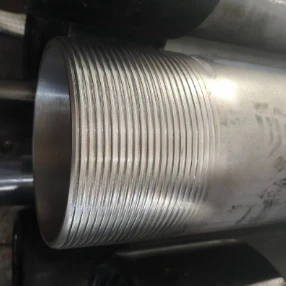- Afrikaans
- Albanian
- Amharic
- Arabic
- Armenian
- Azerbaijani
- Basque
- Belarusian
- Bengali
- Bosnian
- Bulgarian
- Catalan
- Cebuano
- Corsican
- Croatian
- Czech
- Danish
- Dutch
- English
- Esperanto
- Estonian
- Finnish
- French
- Frisian
- Galician
- Georgian
- German
- Greek
- Gujarati
- Haitian Creole
- hausa
- hawaiian
- Hebrew
- Hindi
- Miao
- Hungarian
- Icelandic
- igbo
- Indonesian
- irish
- Italian
- Japanese
- Javanese
- Kannada
- kazakh
- Khmer
- Rwandese
- Korean
- Kurdish
- Kyrgyz
- Lao
- Latin
- Latvian
- Lithuanian
- Luxembourgish
- Macedonian
- Malgashi
- Malay
- Malayalam
- Maltese
- Maori
- Marathi
- Mongolian
- Myanmar
- Nepali
- Norwegian
- Norwegian
- Occitan
- Pashto
- Persian
- Polish
- Portuguese
- Punjabi
- Romanian
- Russian
- Samoan
- Scottish Gaelic
- Serbian
- Sesotho
- Shona
- Sindhi
- Sinhala
- Slovak
- Slovenian
- Somali
- Spanish
- Sundanese
- Swahili
- Swedish
- Tagalog
- Tajik
- Tamil
- Tatar
- Telugu
- Thai
- Turkish
- Turkmen
- Ukrainian
- Urdu
- Uighur
- Uzbek
- Vietnamese
- Welsh
- Bantu
- Yiddish
- Yoruba
- Zulu
Steel Couplings for Piping Systems and Their Key Benefits in Construction Applications
Understanding Steel Couplings for Pipe Applications
In various industries, the efficient and safe transportation of fluids is critical. Steel couplings play an essential role in the connection of pipes, ensuring a leak-proof and durable interface between different sections. These couplings are particularly favored in applications requiring robust and reliable joints due to the material properties of steel, which offer greater strength and resistance to corrosive agents compared to other materials.
What Are Steel Couplings?
Steel couplings are mechanical devices designed to connect two pipe ends together. They can accommodate various pipe sizes and types, making them versatile for numerous applications, including water, oil, gas, and chemical transport. Couplings can either be threaded, welded, or flanged, depending on the specific requirements of the installation and the type of pipes being joined.
Types of Steel Couplings
1. Threaded Couplings These are typically used for pipes that have male and female threads on their ends. Threaded couplings allow for easy installation and disassembly, making them suitable for applications where modifications or repairs are anticipated.
2. Welded Couplings These couplings are fused directly onto the pipe ends, creating a permanent connection that can withstand high pressures. Welded couplings are often employed in industrial settings where high strength and integrity are paramount.
3. Flanged Couplings A flanged coupling consists of two flanges that are bolted together. This type is ideal for larger pipes or when a precise alignment is needed, as they allow for easy access for maintenance.
Benefits of Using Steel Couplings
- Strength and Durability Steel is known for its structural integrity
. Couplings made from steel can handle extreme pressure and temperatures, making them suitable for high-demand environments.steel couplings for pipe

- Corrosion Resistance When coated or treated, steel couplings resist rust and degradation, ensuring a long lifespan even in harsh conditions. This property makes them highly desirable in chemical processing and marine applications.
- Versatility Steel couplings can be adapted for various pipe materials, including PVC, copper, and concrete pipes, enhancing their utility across different projects.
- Cost-Effectiveness Although the initial investment for steel couplings may be higher than that of plastic options, their durability and longevity often result in lower overall maintenance and replacement costs.
Installation Considerations
When installing steel couplings, several factors need to be accounted for to ensure a proper, long-lasting connection. The compatibility of the coupling with the pipes, the environment in which it will be used (temperature, pressure, and chemical exposure), and adherence to local building codes and standards are critical.
Proper alignment of the pipes is essential to prevent stress on the coupling and potential leaks. Moreover, while installing threaded couplings, applying an appropriate sealant can further enhance the connection's integrity. For welded couplings, skilled labor is required to ensure that the welds meet safety and quality standards.
Applications of Steel Couplings
Steel couplings are utilized across a wide range of industries. In the oil and gas sector, they are vital for connecting pipelines that transport crude oil or natural gas. In water and wastewater treatment plants, steel couplings facilitate the movement of liquids safely and efficiently. Construction companies also frequently use these couplings in various plumbing and HVAC applications.
Conclusion
Steel couplings are indispensable tools in the infrastructure of fluid transport systems. Their strength, durability, and versatility make them a top choice for connecting pipes across multiple industries. As technology advances and new materials emerge, the design and functionality of steel couplings continue to evolve, ensuring that they remain a critical component in the maintenance of safe and efficient pipe systems. When selecting a coupling, it’s essential to consider the specific needs of the application to achieve the best results.
-
Tubing Pup Joints: Essential Components for Oil and Gas OperationsNewsJul.10,2025
-
Pup Joints: Essential Components for Reliable Drilling OperationsNewsJul.10,2025
-
Pipe Couplings: Connecting Your World EfficientlyNewsJul.10,2025
-
Mastering Oilfield Operations with Quality Tubing and CasingNewsJul.10,2025
-
High-Quality Casing Couplings for Every NeedNewsJul.10,2025
-
Boost Your Drilling Efficiency with Premium Crossover Tools & Seating NipplesNewsJul.10,2025







